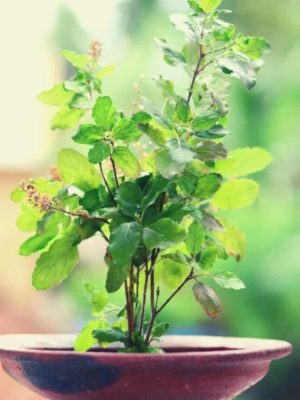
Summer Survival Guide: How to Keep Your Basil Plant Thriving and Hydrated
As the sun beats down and temperatures soar, gardeners and herb enthusiasts alike face the challenge of keeping their basil plants lush and vibrant throughout the scorching summer months. Basil, with its tender leaves and delicate nature, can quickly succumb to wilting and drying if not given the proper care and attention. However, fear not! With a few simple tips and tricks, you can ensure that your basil plants not only survive but thrive in the heat of summer.
How to Keep Your Basil Plant Thriving and Hydrated
Choose the Right Location
The first step in protecting your basil plant from drying out in the summer is to select an optimal location for it to grow. Basil thrives in warm weather but prefers a spot with partial shade, especially during the hottest part of the day. Look for a location in your garden or on your balcony that receives morning sunlight but is shaded in the afternoon. This will help prevent the basil from becoming overheated and drying out too quickly.

Provide Adequate Water
Proper watering is essential for keeping basil plants hydrated during the summer. Basil has shallow roots, so it’s important to water it regularly to keep the soil consistently moist but not waterlogged. Water your basil plants deeply, making sure to soak the soil thoroughly each time you water. Be mindful of the weather conditions; during periods of extreme heat or drought, you may need to water your basil more frequently to prevent it from drying out.
Also Read This : Growing Lemongrass at Home: A Step-by-Step Guide for Beginners
Mulch Around the Base
Mulching is a simple yet effective way to help retain soil moisture and regulate temperature around your basil plants. Apply a layer of organic mulch, such as straw, shredded leaves, or compost, around the base of the plants. This will help prevent moisture loss from the soil, suppress weed growth, and create a more favorable microclimate for your basil to thrive in.
Avoid Overcrowding
Crowded conditions can stress basil plants and make them more susceptible to drying out and disease. When planting basil, be sure to space the seedlings or plants adequately to allow for good air circulation and prevent overcrowding. This will help reduce humidity around the plants and minimize the risk of fungal infections, which can thrive in warm, moist environments.
Also Read This : Harnessing Nature’s Power: Rose Essential Oil as a Safe Pesticide for Organic Agriculture
Prune Regularly
Regular pruning is not only beneficial for encouraging bushy growth and enhancing flavor but also for preventing basil plants from becoming too leggy and prone to drying out. Pinch off the top few inches of growth regularly to encourage branching and promote a compact, robust plant structure. Remove any yellowing or wilted leaves promptly to prevent them from draining energy and resources from the plant.
Fertilize Sparingly
While basil plants do benefit from occasional fertilization to promote healthy growth, it’s essential not to overdo it, especially during the summer months. Too much fertilizer can cause excessive foliage growth at the expense of essential oils and flavor. Use a balanced, organic fertilizer sparingly, following the manufacturer’s recommendations, or opt for compost or organic mulch to provide a slow-release source of nutrients to your basil plants.
Also Read This : 5 Genius Hacks to Keep Insects Away from Your Curry Leaf Plant!
Harvest Frequently
Regular harvesting not only allows you to enjoy fresh basil in your culinary creations but also helps keep your plants vigorous and productive throughout the summer. Harvesting encourages new growth and prevents the basil from becoming overcrowded and prone to disease. Be sure to harvest basil leaves early in the morning when their essential oils are most concentrated for the best flavor and aroma.
Monitor for Pests and Diseases
Keep a close eye on your basil plants for any signs of pest infestations or disease outbreaks, as these can quickly damage and weaken the plants, making them more susceptible to drying out in the summer heat. Common pests that may affect basil include aphids, whiteflies, and spider mites, while fungal diseases such as powdery mildew and downy mildew can also be problematic. If you notice any signs of pests or disease, take prompt action to address the issue using organic pest control methods or disease-resistant varieties.
Also Read This : Easy Steps to Grow Capsicum in a Paot at Home: Your Guide to Fresh Peppers
Consider Companion Planting
Companion planting can be a useful strategy for protecting basil plants from drying out and enhancing their overall health and vigor. Planting basil alongside compatible companions such as tomatoes, peppers, and marigolds can help deter pests, attract beneficial insects, and improve soil health. Be mindful of the specific requirements and compatibility of different plant species when planning your garden layout.
Provide Shade During Extreme Heat
In periods of prolonged heatwaves or extreme temperatures, your basil plants may benefit from temporary shade to help protect them from excessive sun exposure and prevent them from drying out. Consider using shade cloth, row covers, or even strategically placing potted plants or umbrellas to provide relief from the intense summer sun. Just be sure not to shade your basil plants too much, as they still require adequate sunlight to thrive.
Also Read This : Cultivating Adenium Plants at Home for Stunning Blooms Instantly
By following these simple tips and incorporating them into your summer gardening routine, you can help ensure that your basil plants stay hydrated, healthy, and productive throughout the hottest months of the year. With a little care and attention, you’ll be rewarded with a bountiful harvest of fresh, aromatic basil to enjoy in your favorite culinary creations all summer long.




